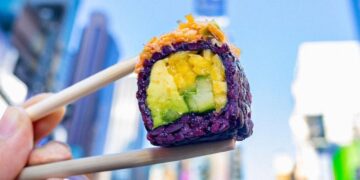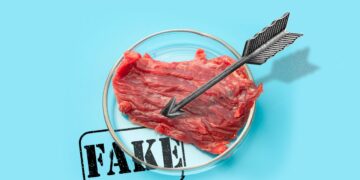[ad_1]
It was a day in 2001 spent rifling by his household’s archives that first sparked Frédéric Rouzaud’s curiosity. Rouzaud is the CEO of Champagne home Louis Roederer, which has been owned by his household for hundreds of years, and amongst these papers, he discovered menus from suppers thrown within the Forties and Fifties by his great-grand-mother Camille. The formidable widow was then barely midway by her greater than four-decade tenure on the vineyard’s helm. She’d scribble the assortment of wines to be served—one of the best vintages of Cristal and different glowing labels, after all, but additionally, remarkably, all the time a couple of nonetheless reds and whites constructed from particular plots dotted across the household’s virtually 600 acres of vines.
“She appreciated to point out how the area may also produce nice nonetheless wine, with shocking wines that individuals didn’t count on,” explains Rouzaud of his great-grandmother’s menus, which included examples from the area of interest class now referred to as Côteaux Champenois (or “the Hills of Champagne”). Why not reintroduce such wines to the world, he reasoned? So for a decade, Rouzaud and his workforce toiled within the vineyards, tweaking plantings and testing grapes, hoping to establish a couple of small, excellent patches of land. He lastly settled on simply over an acre’s value of vines within the space of Les Charmonts for a possible purple, and one and a half acres in Les Volibarts for the white. By 2018, the vines he’d chosen had been prepared, and in March of this 12 months he launched the primary revivals of these reds and whites, limiting manufacturing to simply 1,800 bottles of Pinot Noir and a couple of,800 of Chardonnay. Fittingly, he known as the brand new line Hommage à Camille.
Rouzaud’s venture is well-timed, as curiosity in these neglected, small-batch wines is rising. Per the appellation guidelines for the area, they should be constructed from the identical grapes stipulated for glowing—that’s largely Chardonnay and Pinots Meunier and Noir—however endure only one vinification slightly than the two-step course of that defines Champagne. But, although Côteaux Champenois is the official appellation for non-sparkling wines from the area, the scale of annual manufacturing right now is so tiny that Champagne’s governing physique, the Comité Interprofessionnel du vin de Champagne (CIVC), doesn’t formally escape information on total numbers. It estimates, nevertheless, that as much as 150,000 of the 300 million bottles produced within the area every year are Côteaux Champenois—that’s round 0.3 %.

Bollinger’s La Côte aux Enfants winery in Aÿ, planted with Pinot Noir Grand Cru and farmed organically.
Courtesy of Bollinger
It wasn’t all the time so. Lengthy earlier than the méthode champenoise for turning nonetheless to glowing was invented in 1663, this area was already producing wine, although its outcomes had been workmanlike at finest. Even after pivoting to bubbly, vineyards right here continued to churn out table-wine-like Côteaux within the early Seventies. Greater than 1.1 million bottles had been shipped in 1974, the primary 12 months Côteaux Champenois was formally codified, based on CIVC information. However they garnered few accolades.
“Traditionally, earlier than the Champagne methodology was invented, we crafted nonetheless wine that was so sharp and pale it was known as vin clairet. It’s a play on phrases that doesn’t translate into English, as a result of the wine was so pale, or clair,” says Caroline Brun, an unbiased advertising and marketing advisor based mostly within the area. “We used it principally as a drugs to ease abdomen pains as a result of it was extra acidic than the abdomen itself.”
Quick-forward 300 years, and its fame, and style, had improved little. And as demand for Champagne surged the world over within the Eighties and viticulture within the area developed because of this, producers deserted these unloved nonetheless wines in favor of extra worthwhile, and prestigious, glowing varieties.
So why, then, are Louis Roederer and different top-tier producers revisiting these reds and whites 40 years later? Local weather change is a significant motivator. Harvests now reliably happen a full month sooner than even 20 years in the past, a nod to the hovering temperatures worldwide: International maximums might rise by as much as 8 levels Fahrenheit in 2100, and the common temperature right here has already spiked 1.3 levels Fahrenheit previously 50 years. Heat climate produces riper fruit with increased sugar content material; the ensuing grapes are more durable to tame right into a basic Champagne mix however best for nonetheless wines—this time, because of that additional sugar, with out the defining, acidic punch that traditionally blighted the native output. Think about higher viticulture and a extra dedicated concentrate on securing optimum winery plots, and the rise in high quality of those wines begins to make sense. “To make an ideal Côteaux Champenois, it’s important to have a lot better uncooked materials, as there’s no glowing course of and dosage to masks flaws,” says Peter Gibson of Wine Market Journal, which tracks the trade’s public sale outcomes. Gibson is a longtime champion of those lesser-known wines. “Decrease yields and an ideal specificity give it much more character.”
Jerome Dehours, who operates Dehours & Fils, based by his grandfather in 1930, was one of many first winemakers right here to acknowledge how you can flip the hotter climate to his benefit, producing his first Chardonnay-based Côteaux in 2002. “It was only a few bottles for enjoyable, however the end result was very horny,” he explains, noting that he realized the important thing to a positive wine of this sort lay not primarily in manufacturing, like glowing wine, however slightly in how the vines grew. As is widespread, Dehours owns dozens of disconnected acreage within the space; he centered on small plots of clay and limestone grime halfway up some north-facing slopes close to the village of Cerseuil, with outdated vines and brief pruning, and rapidly developed a fame for positive Côteaux Champenois amongst purists. Dehours now produces these Chardonnays, Les Vignes de Mizy and Les Rieux on a whim, between 600 and a couple of,000 bottles per 12 months: “It’s only a query of feeling.”
This skill to specific terroir extra distinctly is a consider nonetheless wines’ resurgence. Put merely, they provide winemakers extra leeway to innovate. Champagne is the best-known French area with the appropriate to mix white and purple wines for its remaining product (there are a couple of locations within the south that will additionally mix the 2 grapes, based on the CIVC); consistency, or home type, has lengthy outlined its manufacturing. Côteaux Champenois, however, are determinedly idiosyncratic, supposed to evoke their specific piece of earth—its soil, solar publicity and local weather—very similar to a positive wine from Burgundy may. Certainly, one of many few high-profile Côteaux to be produced repeatedly for a lot of many years is Bollinger’s Côte aux Enfants, a Burgundian-style purple constructed from a cluster of Grand Cru grapes on a steep, 70-acre subject close to Aÿ and aged in small old-oak barrels.
That chance to develop a terroir-forward product significantly appeals to the youthful technology of Champagne-based winemakers, based on Ariel Arce, proprietor of Air’s Champagne Parlor in New York. A lot of them bucked the custom of native coaching and as a substitute apprenticed around the globe, the place they may study different methods. “They arrive again after learning with among the finest on the earth, and the winemakers who fancy themselves vignerons greater than champenois try to make unimaginable wine like this,” she notes.
Standout abilities embrace Vincent Laval, who presides over the Georges Laval label and is the fourth technology of his household to make wine from grapes grown on a small Premier Cru plot in Cumières; Aurélien Lurquin, who has bottled wine from simply over six acres close to Romery since 2007; and brothers Quentin and Antoine Paillard, whose household began making their namesake Champagne within the Grand Cru village of Bouzy after shopping for a patch of land there in 1768. “We had extra alternatives to style, to debate, to go to different areas,” Antoine says, citing different components of France, equivalent to Burgundy and the Loire Valley, from which winemakers right here would by no means have drawn inspiration or sought recommendation previously. “Our technology is extra related with social networks and extra open-minded.” He pauses. “We all know what we like, and we discovered how you can produce it.”

The Paillard household has been making Champagne since 1768, and brothers Antoine and Quentin now additionally produce 2,500 bottles of Côteaux yearly. Right here, the winery’s cellar.
Courtesy of Champagne Pierre Paillard
The rise in small-batch-grower Champagne has additionally made it simpler to market Côteaux Champenois, positioning it as one other artisanal expression amid the economic volumes produced close by. The Paillard household’s much-praised output can also be minute— simply 2,500 bottles a 12 months now—in contrast with the historic manufacturing of this expression; within the Nineteen Sixties, his household’s land yearly offered 25,000 bottles of its Côteaux Champenois. “Now you normally use one of the best winery in your vineyard for them; that’s why the manufacturing is so tiny,” Antoine tells Robb Report. “Largely very outdated vines, with very low grape manufacturing, for the reds. It’s a distinct segment market.”
No surprise it’s arduous to amass positive examples Stateside, warns Gibson. Allocations are restricted—one fortunate store could obtain the one half-case destined for the US, so he recommends asking your wine service provider to seek out them in your behalf or visiting Aÿ and its environs in individual to unearth some. Consider these just like the wine world’s reply to the key menu at In-N-Out Burger: Often tasting rooms will discreetly provide samples and the possibility to purchase a bottle or two by no means offered off-site, seemingly as a result of portions are so small they’re impractical to export.
The caliber of such Côteaux Champenois right now is excellent in contrast with their mid-market counterparts within the Seventies. “It’s the renewal of a really outdated conventional wine that the world is lastly discovering, a brand new pleasure to seek out within the area,” says Brun, the advisor. “I all the time say the Champagne area is sort of a diamond for wine lovers. Properly, consider this like a brand new reduce.”
[ad_2]
Source link







